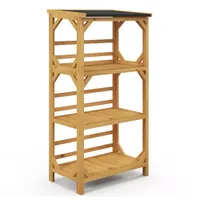What is an auricula theater – and why we love this delightful English country garden method of displaying spring flowers
We delve into the historical practise of auricula theaters with an English country gardener


Auriculas, also known as primula auricula or bear’s ears, have a history of being collectors' items. And it's easy to see where their popularity comes from. Their jewel-like flowers come in a variety of shades and petal-shapes. And many are beautifully scented and will be a unique addition to a spring garden.
One person who knows a thing or two about this quaint backyard practice of displaying flowers is Nick Swankie, senior gardener at the National Trust’s Benthall Hall in Shropshire, England, which is home to a delightful auricula theater.
'Auriculas first rose to prominence during the reign of Elizabeth I. They were seen as a choice spring flowering plant for the discerning gardener, and many of the big houses at the time would have been sure to have one or two on display, most likely on individual stands in cool rooms,' says Nick.
As we delve deeper into their history, Nick shares his advice on how you can create a heritage-style piece for your backyard and bring something a little special to your spring flower displays.
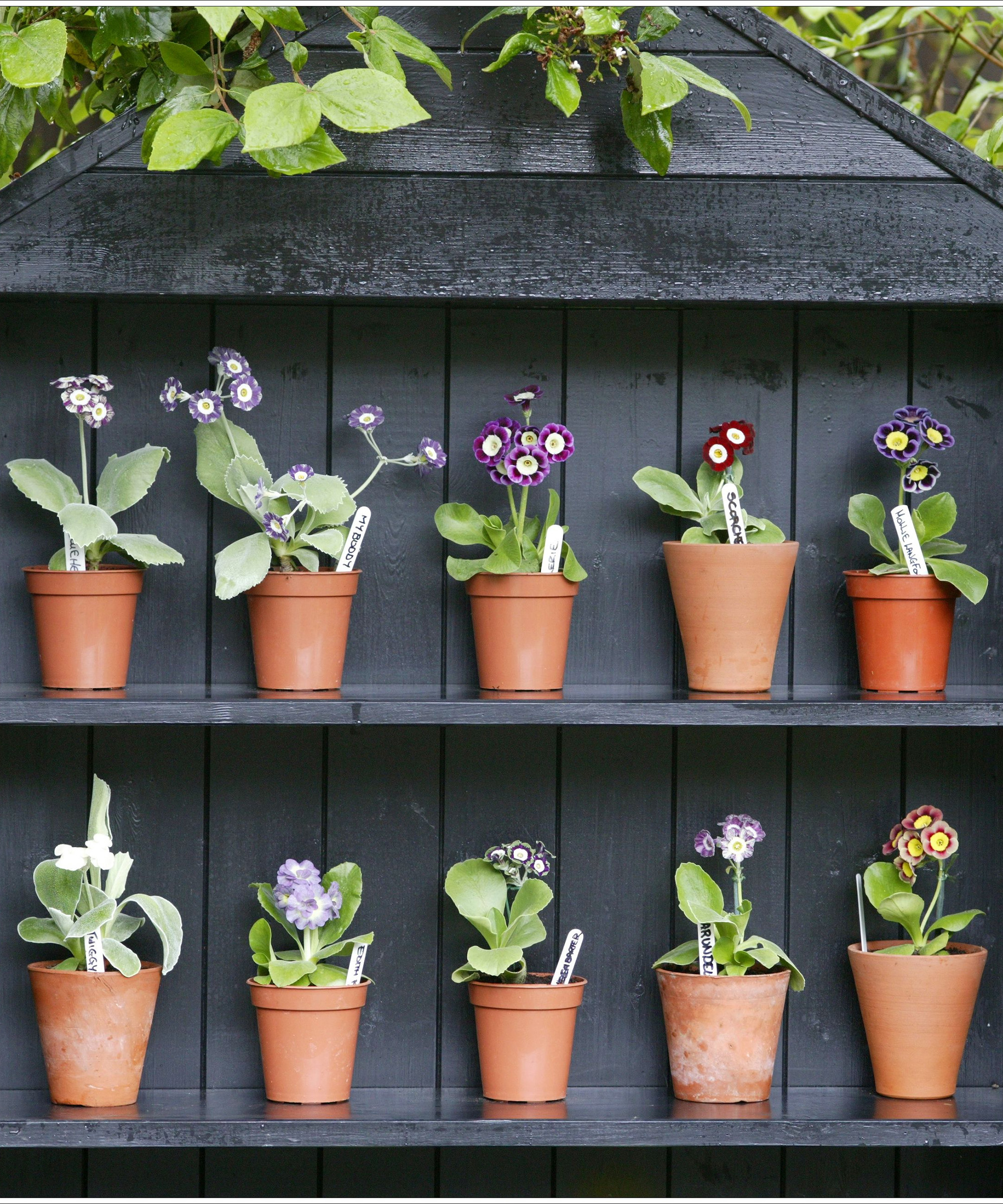
Everything you need to know about auricula theaters
'It wasn’t until the 17th century that auricula theaters were recorded, and they were popular with our French and Belgian counterparts,' says Nick.
'They were built really for the purpose of protection rather than for displaying these spring flowers for pots, because, even though auriculas in the wild are plucky alpines, as more and more fancy varieties were bred, the flowers and in particular the foliage would suffer if exposed to windy or wet weather.'

Senior Gardener at the National Trust’s Benthall Hall in Shropshire in the UK, he is an expert in classic English-style gardens and tends to the auricula theater at Bentham Hall.
What are auricula theaters?
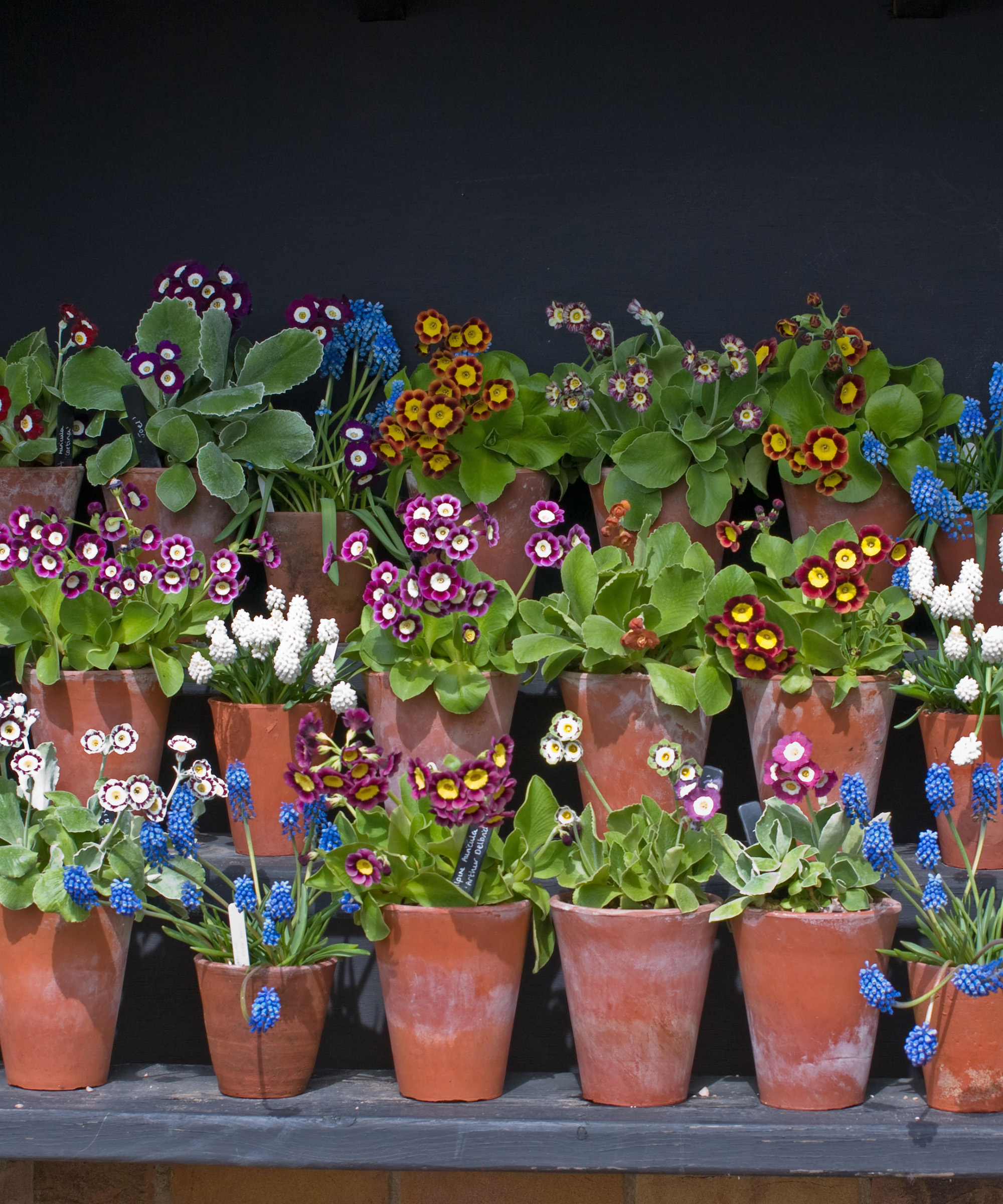
Nick explains that back then, the ‘theater’ would have been more like an open sided box with a lid to keep the worst of the rain off your spring planting. The box itself would have kept the wind at bay, likely to be painted a dark color so as to show off the flowers.
Design expertise in your inbox – from inspiring decorating ideas and beautiful celebrity homes to practical gardening advice and shopping round-ups.
'As we move through time these ‘boxes’ soon become more and more elaborate, and eventually during the great halcyon days of high Victoriana, we arrive at the auricula theaters we see today.
'Brick-built, open-fronted structures, with myriad staging for many potted specimens, sometimes with windows that can be removed at certain times of the year,' says Nick.
'Those gardens that didn’t have the space for a dedicated building would use a temporary wooden stage erected in a cool spring porch or summerhouse to display them. In more workaday vegetable gardens, they may have occupied the corner of a cold greenhouse, or spare cold frame,' he adds
How to create an auricula theater in your backyard

These plant displays aren't just the reserve of English country gardens. Nick explains how simple it is to create an auricula theater in your own backyard.
'It can literally be as simple as our French and Belgian forebears used, just a little wooden box, remember it’s the auricula who is the star of the show.
'However if you’d like to display more than a couple of spring pots then you’ll need a staging to stand them on. You can buy purpose-built free-standing ones, but remember they need to have a roof over them to protect the flowers and foliage,' says Nick.
'A really simple auricula theater can be a couple of shelves screwed to a shed or wall. Ideally paint the shelving black, it really does make the pots of auricula pop.'
For the job, try black, Rust-Oleum Studio paint at Walmart. Use another slightly deeper shelf to make a little roof, you could also screw wooden boxes to a wall for a similar effect.
'You could upcycle an old solid wooden bookcase, but be careful using flat pack furniture as it really doesn’t like to get wet. Similarly you could make a simple freestanding stage with an old stepladder or short piece of a long ladder, just make sure it has flat treads and not round ones,' says Nick.
'Ideally pot any plants into plain terracotta pots, as they really help to set the scene. They are also better for the plants, stopping them getting too wet (this can be an issue if using plastic pots). If you do use plastic pots, make sure you put lots of drainage material in the bottom of the pot,' he adds.
This structure is ideal for an auricula theater which has farina plants in, as it has a weatherproof roof. Painted with black outdoor paint, it will have an authentic look.
How to maintain auricula theaters
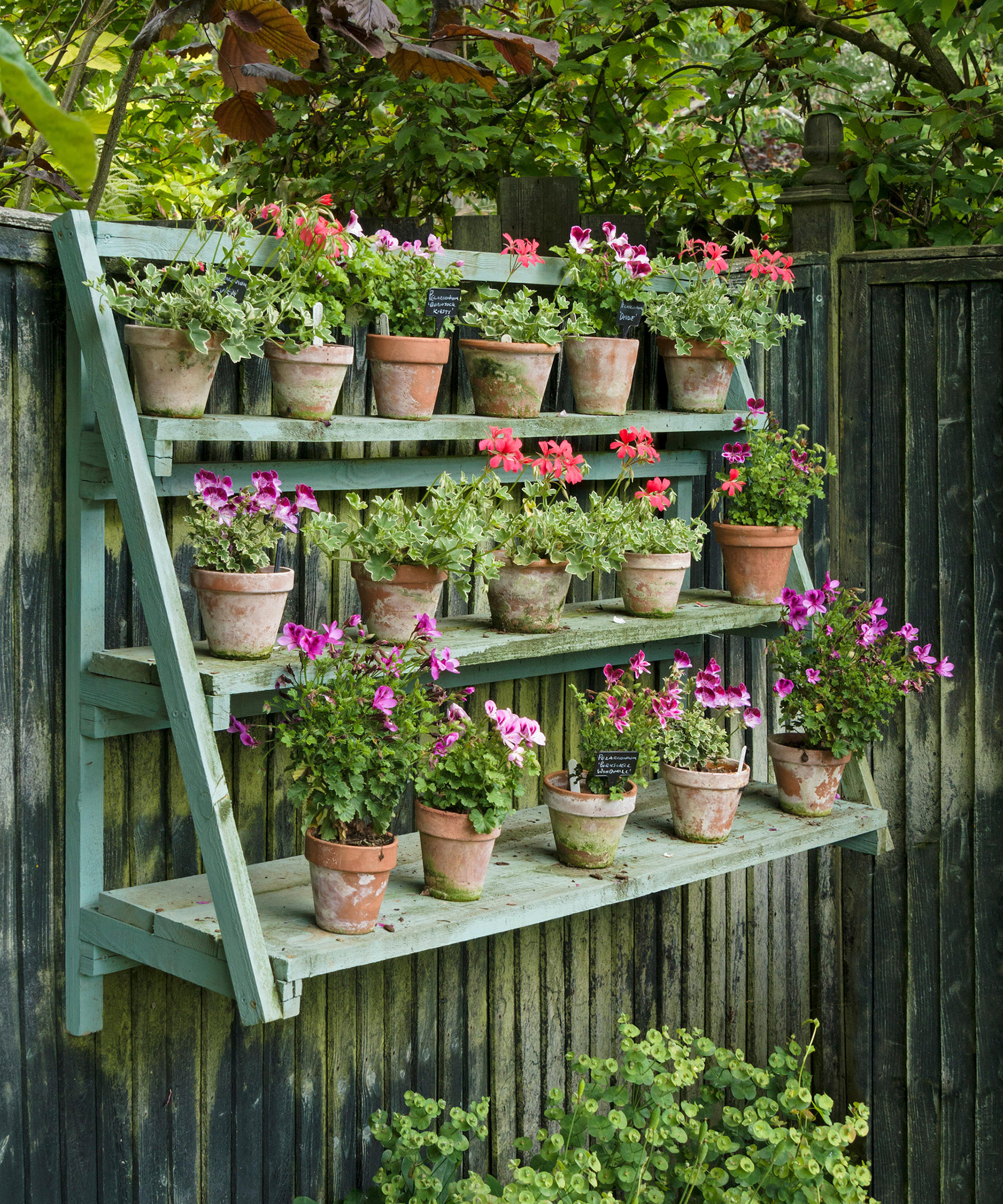
If you like the style of auricula theaters but would like something a little more hardy, display pelargoniums instead
The physical theater will need to be cared for in different ways depending on what it’s made from, and where it’s situated. Wooden auricula theaters will need to have a wipe down from time to time to keep them looking their best.
'This will clean any spillages, which could encourage algae and moss to grow and damage any painted finish,' says Nick.
'Metal or plastic staging can be similarly treated with a wipe down. At the end of the auricula show, you can repaint any wooden structures and either put them away for next year, or use them for other special plants. I use mine for pelargoniums, violas, and ferns,' he adds.
Caring for auricula plants
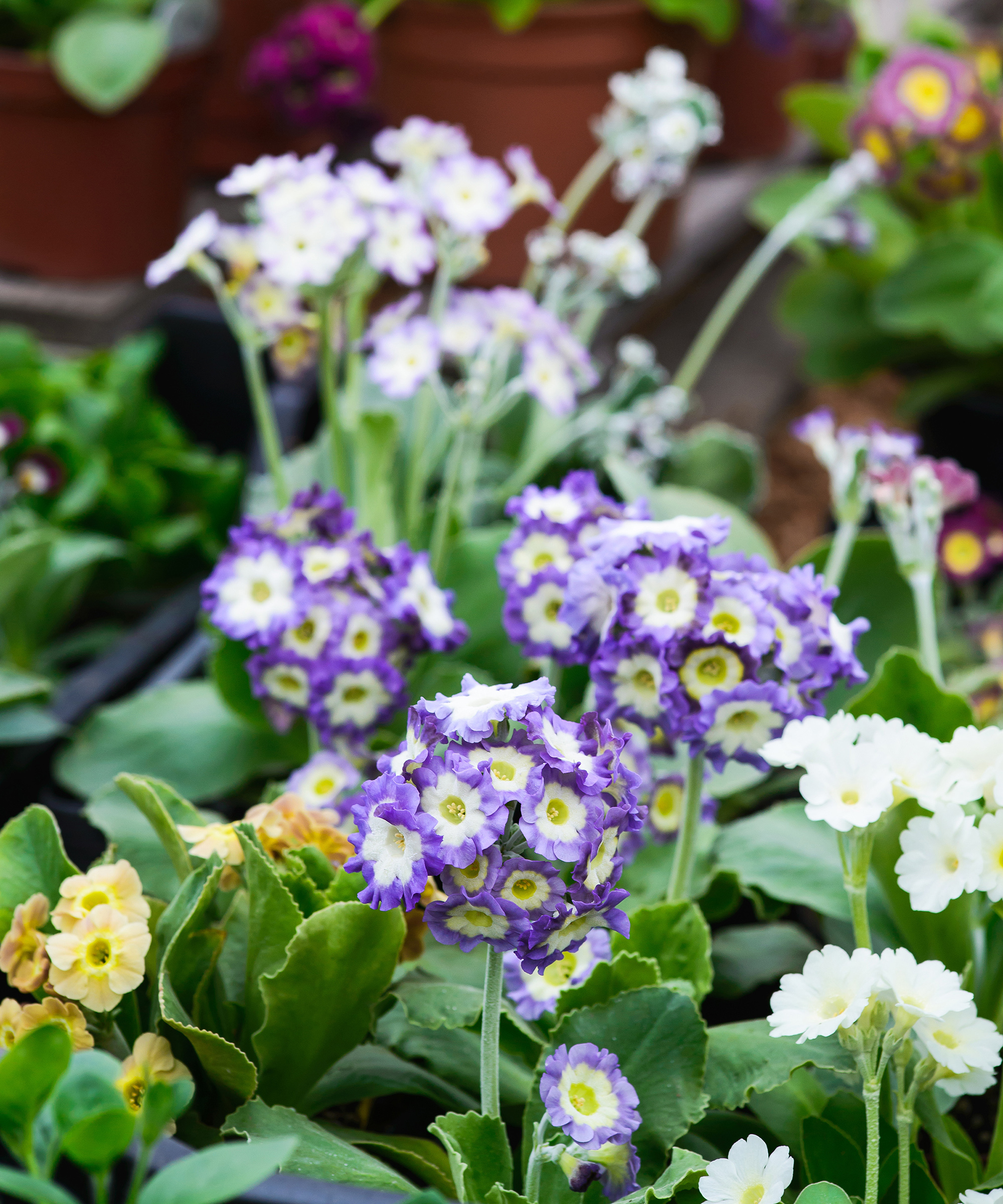
As for the auricula plants themselves, these just need to be deadheaded, and then the pots can be nestled into the ground in your regular cooler flower beds for the summer and fall.
'When winter comes, move them to somewhere with more shelter, but cool (an unheated conservatory, a porch, garage window, or even a cool spare bedroom windowsill) and think about getting your theater ready for the spring again,' explains Nick.
'The only exception to this is to keep ‘Farina’ type auriculas (with flour-dusted leaves and flowers), under cover, as they dislike water on their leaves and flowers. These can be stored in a cool spare bedroom windowsill or porch.'
Ideally you should transplant auriculas when the rosette of leaves begins to look crowded, and when the plants aren’t flowering. At this point you may find you have baby auriculas to pot up and bulk up your collection, or give as gifts to friends.
Use a gritty free-draining, peat-free compost, and remember to dress the top of the pot with fine grit to help disperse water away from the rosette so it doesn’t rot.
FAQs
What are the best auricula plants?
Auriculas, bear's ears or primula auricula come in many forms. Here are our top five favorite auricula varieties:
- Argus: Deep burgundy with bright pink edges and a cream center, large beautifully colored flowers held above rosettes of fleshy broad leaves.
- Beatrice: Deep blue shading to light blue, an old variety growing since 1914. Beautiful shaded flowers with lovely rosettes of healthy green leaves.
- Dale’s Red: A charming auricula with dark violet purple petals set neatly around a soft white center. with luscious green foliage. This one is better shaded from midday sun, but the extra fuss is worth it.
- First Lady: A lovely auricula with beautiful golden yellow petals suffused with red, intensifies towards the center of the flower. A good grower and easy to look after.
- Purple Pip: Luxurious, with deep violet double blooms held in clusters on upright stems. These rise from rosettes of silver dusted, simple green leaves. This one has silver leaves but is quite tolerant of moisture on the leaves.
Auricula theaters can be placed in any backyard environment and can be given a contemporary twist by using sleek wood with clean lines. But they would also be well at home in rustic kitchen gardens, to pretty up a corner.

Teresa was part of a team that launched Easy Gardens magazine two years ago and edited it for some time. Teresa has been a Gardens Editor at Homes & Gardens, Country Homes & Interiors and Living Etc magazine since 2020 and has developed close working relationships with top garden designers, and has been exposed to an array of rich garden content and expertise.
